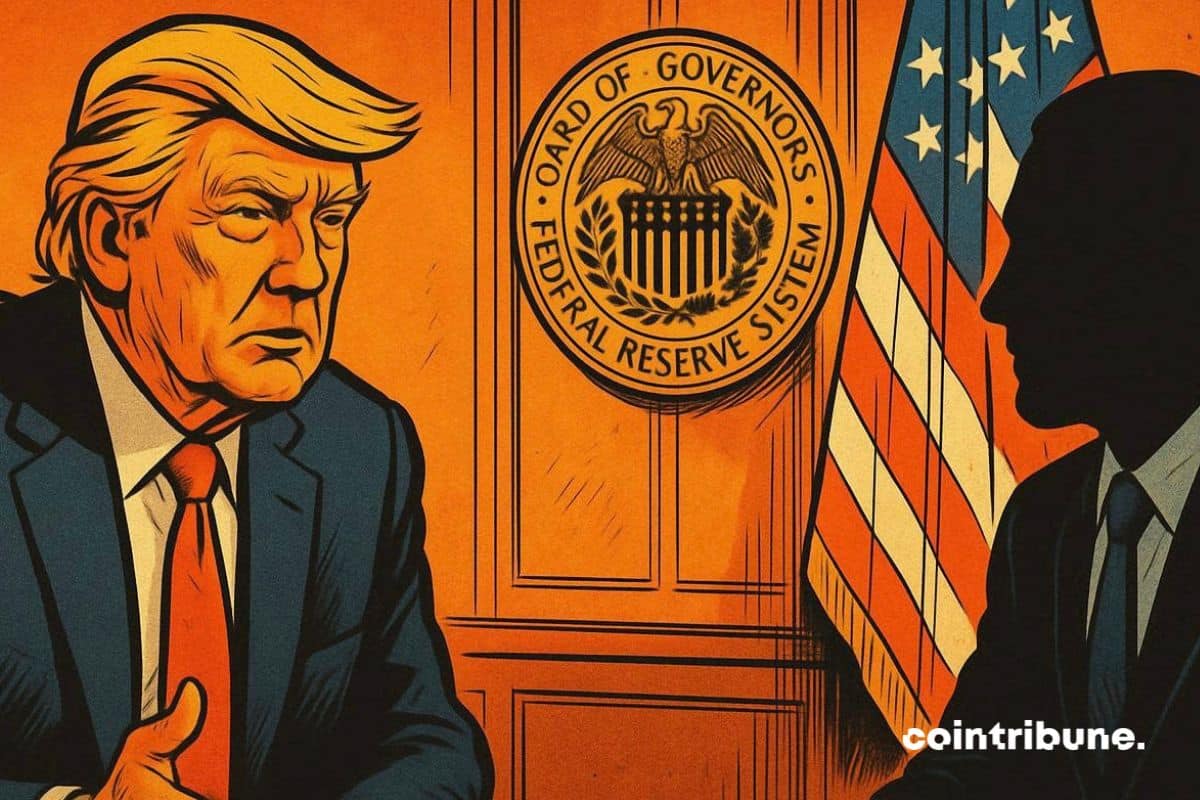How high would Bitcoin price need to go to erase US $38 trillion debt?
The US has never owed more money that it does today, and some believe the solution isn’t political reform or higher taxes but Bitcoin itself.
America’s national debt has crossed $38 trillion, surpassing the country’s annual GDP by nearly 31%.
Notably, the figure also marks one of the fastest periods of debt accumulation in modern history. The Kobeissi Letter pointed out that Washington added over $500 billion in new debts this month, or roughly $23 billion per day.
The firm added that at this pace, “there is a 100% certainty of US bankruptcy with a long enough timeframe.”
This warning rang alarm bells worldwide as it showed how unsustainable the US government’s current fiscal policy was.
However, Bitcoin advocates saw this as proof that fiat money has reached the limits of credibility.
As a result, the idea now circulating through crypto forums and policy debates is as radical as it is simple: what if Bitcoin could someday help erase the US debt?
US policy
At first glance, the theory sounds like digital-age alchemy, turning code into solvency. Yet it has gained surprising traction as fiscal anxiety spreads.
Last year, during his campaign for office, President Donald J. Trump suggested that the United States could clear its debts through Bitcoin. True to his belief, he approved the launch of a Strategic Bitcoin Reserve upon ascension and touted the several benefits of the top crypto this year.
This move has gathered significant community support, with crypto advocate Senator Cynthia Lummis arguing that building a Sovereign Bitcoin Reserve could “shore up the dollar with a hard, auditable asset.”
In her view, holding Bitcoin alongside Treasuries would do what gold once did: signal credibility, hedge inflation, and perhaps, decades from now, help retire a fraction of the debt.
She said:
“[BTC will] secure our debt with a hard asset + we can audit it to prove reserves at any time.”
That rhetoric, once fringe, resonates in a world where fiscal expansion looks endless. But if the US ever attempted to use Bitcoin to extinguish its liabilities, how high would the flagship digital asset need to climb?
How high must BTC climb for US debt?
The math appears elegant at first. Divide $38 trillion in national debt by Bitcoin’s circulating supply of 19.93 million BTC, and you arrive at a figure near $1.9 million per coin.
At that price, Bitcoin’s total market capitalization would match the entire debt load of the US government.
But the equation breaks the moment you add reality. The US government doesn’t own 19.93 million Bitcoin, it owns only a fraction.
According to Bitcoin Treasuries data, the US currently holds about 326,373 BTC, or roughly 1.6% of BTC’s total supply, which was primarily acquired through seizures from criminal investigations.
If Washington tried to use only that amount to clear its debt, the number would significantly explode.
Divide $38 trillion by 326,373 coins, resulting in $116.5 million per Bitcoin. This is about 1,000 times higher than the current market price, near $108,000.
At that valuation, Bitcoin’s total market capitalization would soar to roughly $230 trillion, which is more than twice the world’s GDP.
Meanwhile, even if prices somehow reached those heights, the mechanics would collapse long before the debt vanished.
Bitcoin trades about $60-$70 billion in daily volume, according to CoinMarketCap data. This represents only a fraction of the $7.5 trillion liquidity seen in global bond or FX markets.
So, attempting to liquidate even a small share of supply to “repay” government debt would instantly crater demand and destroy price depth.
Moreover, there’s less Bitcoin to trade than most assume.
A Chainalysis report has suggested that about 20% of all mined coins, representing nearly 4 million BTC, are permanently lost to forgotten keys or destroyed wallets.
That leaves closer to 16 million BTC in effective circulation. Adjust for that, and the so-called “debt parity” figure rises significantly to more than $2 million.
What the numbers show
While Bitcoin cannot literally extinguish America’s debt, the exercise exposes a more profound truth about modern finance.
It shows that governments can create liabilities faster than markets can produce credible collateral. Every new borrowing widens the gap between what money represents and what it measures.
That asymmetry explains why Bitcoin continues to resonate in policy debates and portfolio strategies alike. Its design, capped at 21 million BTC, is in silent contrast to a financial system built on perpetual expansion. Scarcity, once treated as a relic of the gold era, has become the most valuable commodity in money.
Each trillion added to the US debt reinforces Bitcoin’s narrative of finite supply versus infinite credit. It also helps explain why institutional interest keeps deepening through spot ETFs, corporate treasuries, and even speculative talk of sovereign reserves.
For investors, Bitcoin has evolved from a curiosity into a macro hedge against a world where the denominator, the dollar itself, no longer feels fixed.
The post How high would Bitcoin price need to go to erase US $38 trillion debt? appeared first on CryptoSlate.
Disclaimer: The content of this article solely reflects the author's opinion and does not represent the platform in any capacity. This article is not intended to serve as a reference for making investment decisions.
You may also like
HyENA officially launched: Perp DEX supported by Ethena and based on USDe collateral goes live on Hyperliquid
The launch of HyENA further expands the USDe ecosystem and brings institutional-grade margin efficiency to the on-chain perpetuals market.
Elon Musk at the Center of an Unprecedented Showdown with the EU

Stablecoin Payments: Stripe’s Tempo Blockchain Launches Public Testnet

Trump Launches Fed Auditions: Who Will Replace Powell?

